A lot of people think that the Shroud of Turin shows the face of the Messiah himself, Jesus Christ. This must be one of the most famous historical relics at the moment. However, there are a lot of rumors surrounding it as well. A recent study took DNA samples from the shroud and analyzed them. You would think that this would help resolve things, but this actually just added to the mystery around it! Let us see what they learned about the religious artifact… For those unfamiliar with it, the Shroud of Turin is a piece of cloth that has blood traces on it. There is also a faint imprint of a male body on it. Thousands of people pay it a visit every year. After all, this is said to be the same fabric that covered the body of Jesus Christ before the Resurrection.
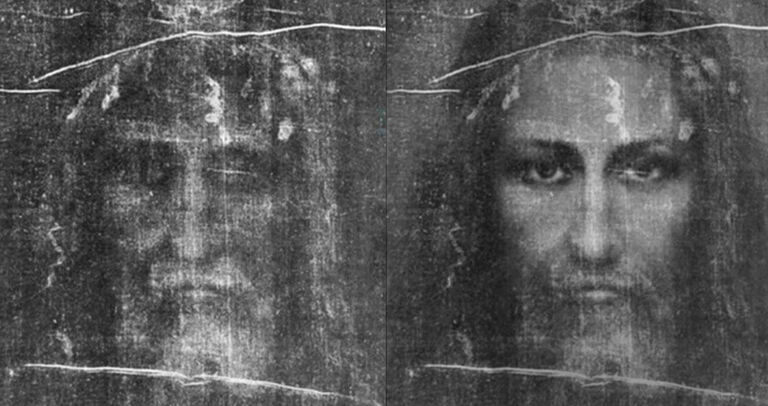
DNA Test Results Offer Shocking Revelations About The Shroud Of Turin
It Has A Rich History
The shroud has become so famous since it constitutes a huge biblical legend. This piece of cloth was said to have come from the tomb of Christ. The Shroud of Turin was taken from Judea to Constantinople. Over there, it was stored and kept safe for several centuries until it was discovered once more.
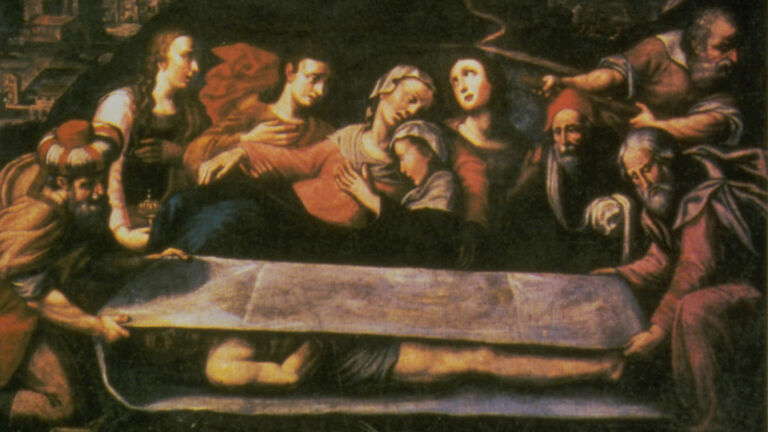
It Has A Rich History
No One Expected To Find It There
In 1353, it appeared in a small church in the town of Lirey in France. However, the truth is that not a single soul knows how it got there in the first place. At any rate, the Catholic Church only made a public acknowledgement of its existence when it cropped up in such an unlikely location.
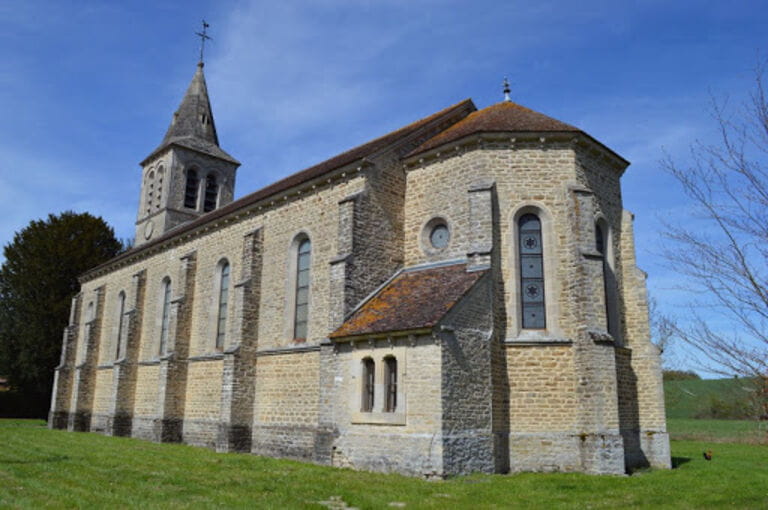
No One Expected To Find It There
Tracing The History Of The Shroud
In the ‘80s, the Catholic Church finally gave its permission to have the shroud examined. With the help of radiocarbon dating technology, scientists analyzed the cloth and claimed that it was made anytime from 1260 to 1390. The implication is that this was fake. Of course, some people did not take this well.
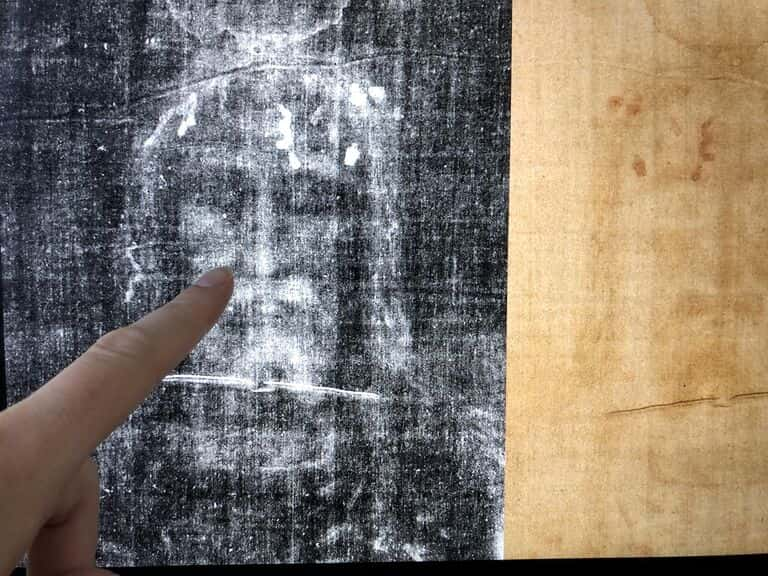
Tracing The History Of The Shroud
The Results Were Dubious
As you can imagine, this did not sit well with many people. Critics and religious zealots alike claimed that researchers relied on patches of the shroud. You see, individual portions of the fabric might have different ages, depending on the time they were made. This could indeed lead to a wrong estimate.

The Results Were Dubious
A Wave Of Neutrons
The Gospel of Matthew said that upon the death of Jesus Christ, “The earth shook, the rocks split, and the tombs broke open.” This could mean that a huge earthquake took place. Geologists say that a strong one could release a wave of neutrons that can also lead to an inaccurate radiocarbon dating process.

A Wave Of Neutrons
They Extracted DNA From It
In 2015, a study was conducted by a team led by a geneticist by the name of Gianni Barcaccia. They extracted dust from the shroud and analyzed the resulting sample. The dust particles came with traces of not just plant DNA but also of human DNA! Could it actually have belonged to Jesus Christ?
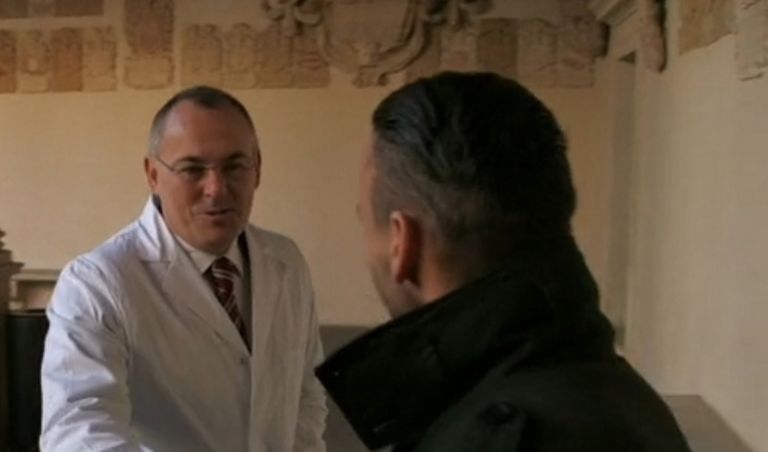
They Extracted DNA From It
From All Over The World
Barcaccia separated and then sequenced the sample. He relied on the human mitochondrial DNA that a child inherits from the mother. Based on the findings, the garment must have been touched at one point by people in East Africa, North Africa, and China! It is fascinating that they managed to trace all of that.

From All Over The World
Both Plant And Human DNA
Aside from what they learned from the human DNA, the plant DNA offered a diverse lineage too. It looks like there is DNA from all over the world on it. Among other things, the shroud came with samples of European spruce trees, Mediterranean clovers, East Asian plum trees, and North American trees.

Both Plant And Human DNA
It Was Close Enough
In any case, the most prominent ones came from certain regions of the Caucasus and the Middle East. That might be an indication of where its origins. As a matter of fact, it is not a stretch to say that it came from somewhere near the alleged tomb of the Messiah himself.
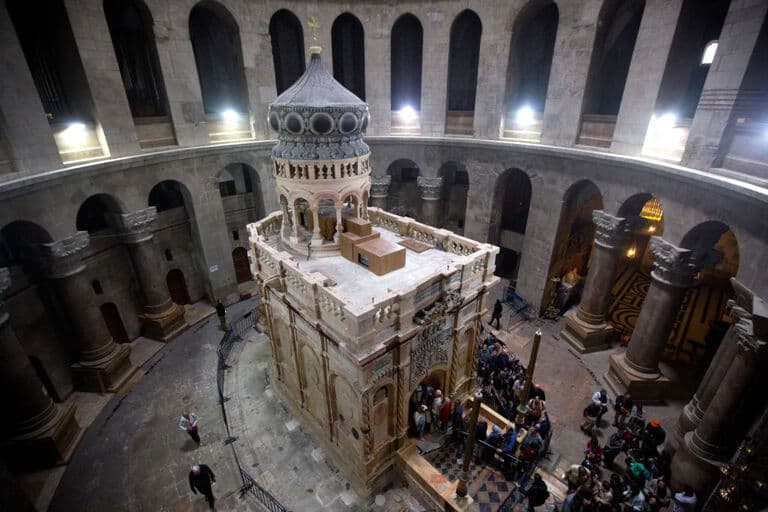
It Was Close Enough
An Abundance Of Human Haplotypes
Barcaccia shared something interesting about a specific haplotype that they found on the fabric. The team found out that one of the most prominent looked like it came from the Druze community. If you don’t know what it is, it is an ethnic group that can trace its origins back to parts of the Middle East.

An Abundance Of Human Haplotypes
The Fabric Had Indian Origins
It is interesting to note where they traced the oldest snippets of DNA on the Shroud of Turin from. The findings suggest that they had lineages found only in India. That piece of information came as a surprise. This suggests that the fabric was originally made in India. Somehow, it found itself in Europe.
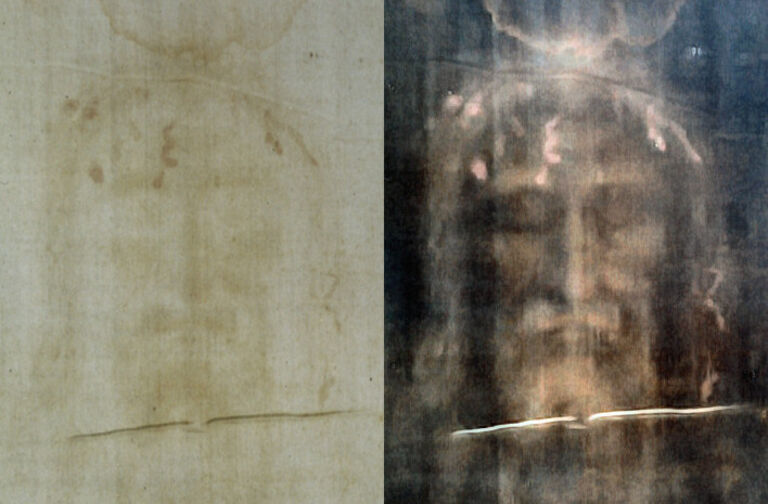
The Fabric Had Indian Origins
Those Who Came Across It
Barcaccia shed more light on the matter recently. In an interview, he said, “In my opinion, it is hard to believe that in the past centuries… different subjects — such as priests, monks or nuns… of Indian ancestry — have had the possibility to come in contact with the shroud in France and/or Turin.”
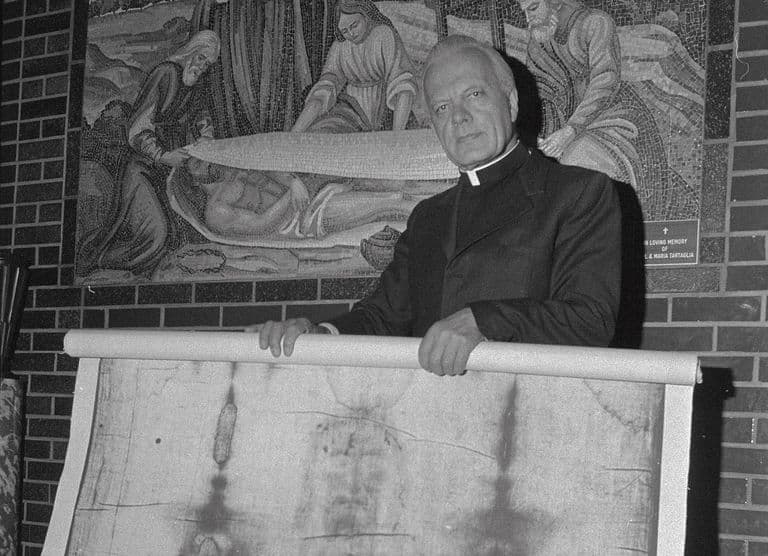
Those Who Came Across It
The British Society Of The Turin Shroud
We are not even slightly surprised to hear that the results of the analysis have been disputed. Hugh Farley is an editor of the newsletter of the British Society of the Turin Shroud. He said that the results are not sufficient enough to answer the questions about the authenticity of the shroud.
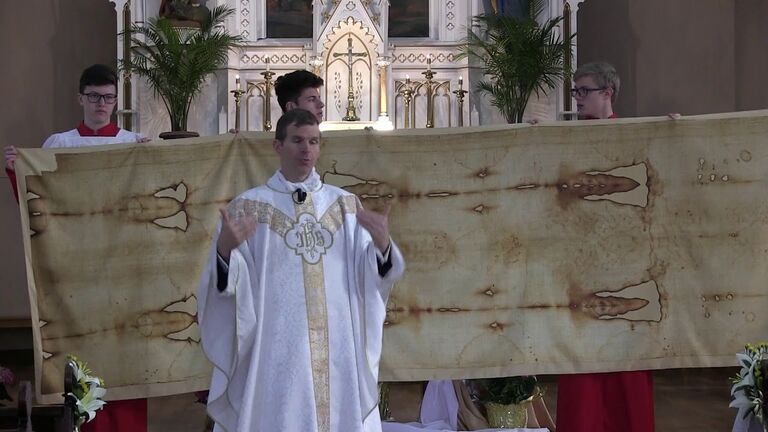
The British Society Of The Turin Shroud
They Did A Good Job
Hugh Farley made sure to acknowledge that the researchers did what they could. The problem is that it is not enough. “They’ve done a good job, and they’ve identified a number of species that mean, broadly speaking, nothing at all,” he explained. He does not think that it has led to conclusive results.
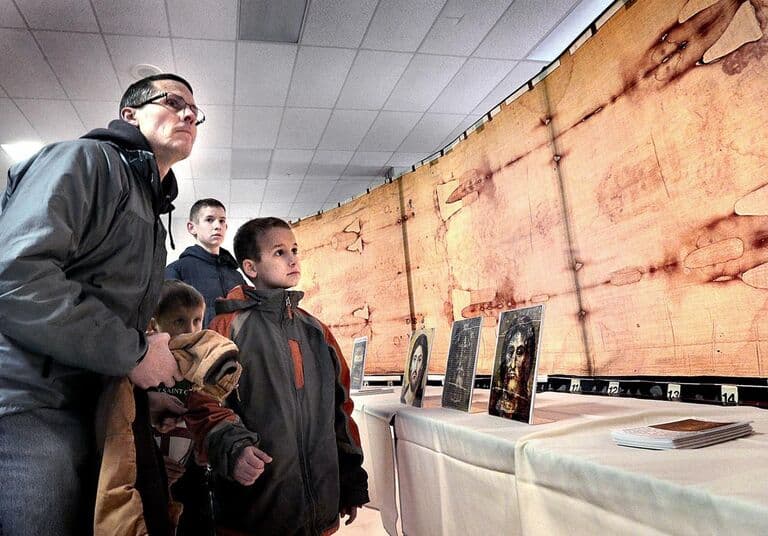
They Did A Good Job
What A Geoscientist Had To Say
On the other hand, we have yet another critic in the form of a Danish geoscientist called Renee Enevold. She said that previous studies of pollen that had been performed on the fabric were unreliable. It has been pointed out as an issue. She does not think that the plant DNA has been linked to the real source.
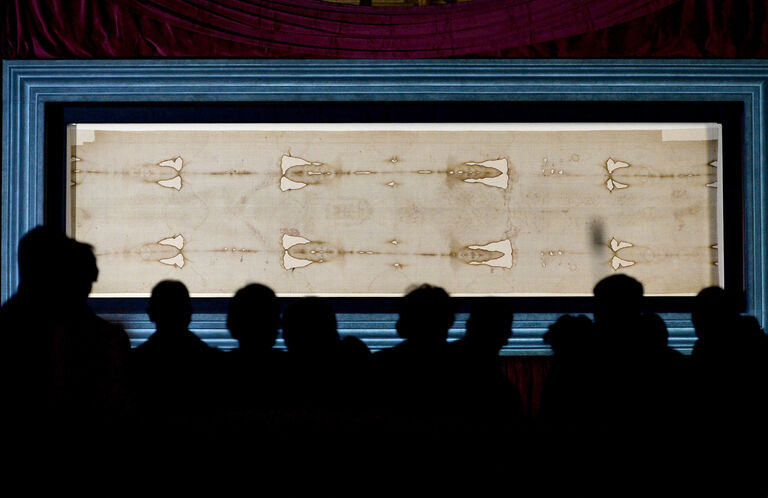
What A Geoscientist Had To Say
It Has Been On Display For A While Now
Farey also made an excellent point by bringing up how the Shroud of Turin had been on display all over the globe for centuries. It is only natural that has been exposed to external elements. It might not look possible that the shroud came from the United States, but there are many other possibilities.
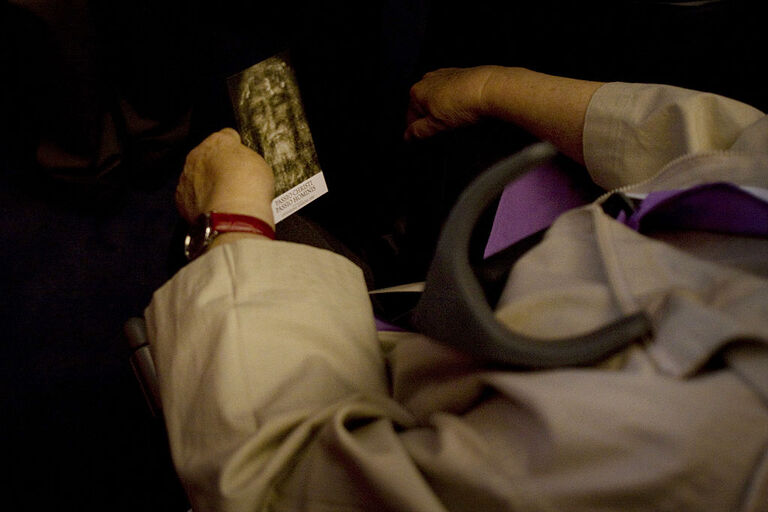
It Has Been On Display For A While Now
The Indian DNA
He might be of the belief that the Shroud of Turin is a forgery, but he is not entirely convinced either. Farey has argued that the Indian DNA sample might have come from an older analysis. For the sake of context, it underwent a scientific study back in the 20th century as well.

The Indian DNA
Keep An Open Mind For Now
What is it going to take to convince Farey? According to him, scientists need to run tests on the flax seed that made up the piece of linen. This has yet to be accomplished. He insisted, “The proper thing to do is to maintain an open mind at the moment.” That sounds like a good idea.
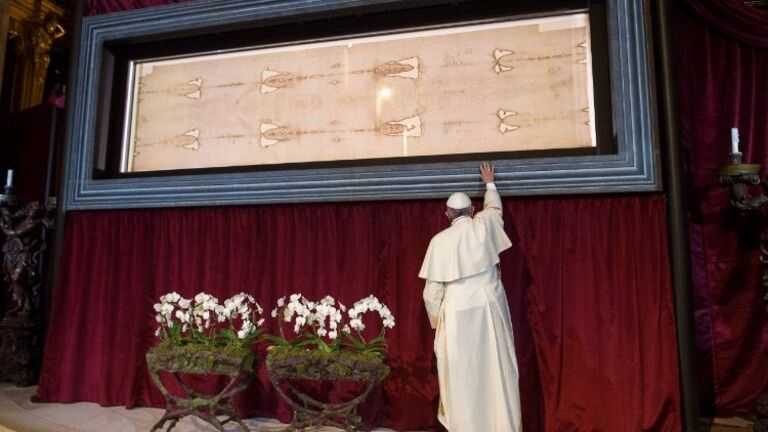
Keep An Open Mind For Now
With New Technology
In the end, it might be solved with the help of more advanced scientific methods. Geologists now have the means to learn the origins of a rock with precision. There is a good chance that we will reach a more definitive answer in the near future. However, the shroud is not the only religious mystery out there.

With New Technology
A Place Called Silwan
Do you want to learn more biblical finds? For one thing, there is also Silwan. It is a neighborhood in the Old City in Jerusalem. While working at a potato field, sewage workers unintentionally discovered a relic of ancient history in 2004. They found a treasure trove that had not been explored for the longest time.
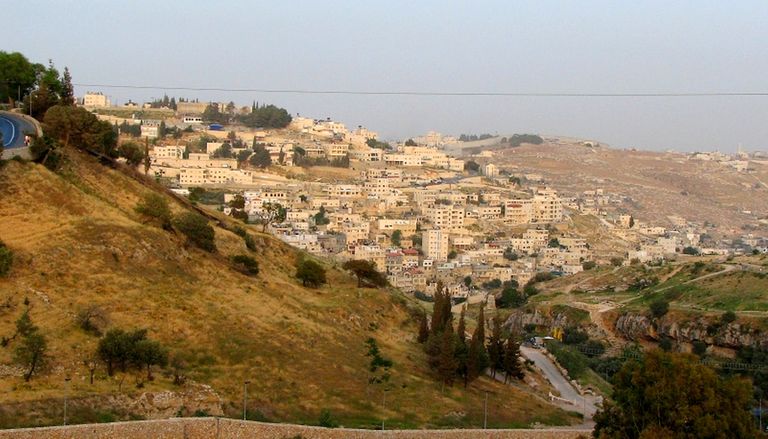
A Place Called Silwan
Back In The Day
A long time ago, Silwan was not just a suburb located outside Jerusalem. We are going to have to go as far back as 516 B.C. for this one. In those days, it was a community full of religious activity. There was more to it than its location on the map, however.
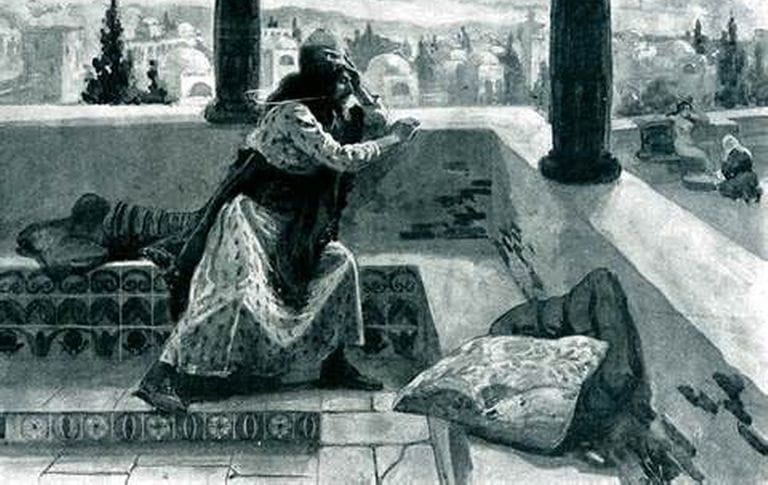
Back In The Day
The Pool Of Siloam
In those days, a Jew in the middle of a religious awakening would go to Silwan. This is where the Pool of Siloam is located. They would go here for ritual cleansing before going to the Temple Mount. This is fascinating to hear, but there was another reason this site is considered to be very important.

The Pool Of Siloam
Its Long And Rich History
There was a time when the City of David was located in Silwan too! Without a doubt, the place has a very interesting and rich history. Formerly known as Jebus, this used to be the home of the Jebusites. The Canaanite tribe once lived there before the city was seized by David, the King of the Israelites.
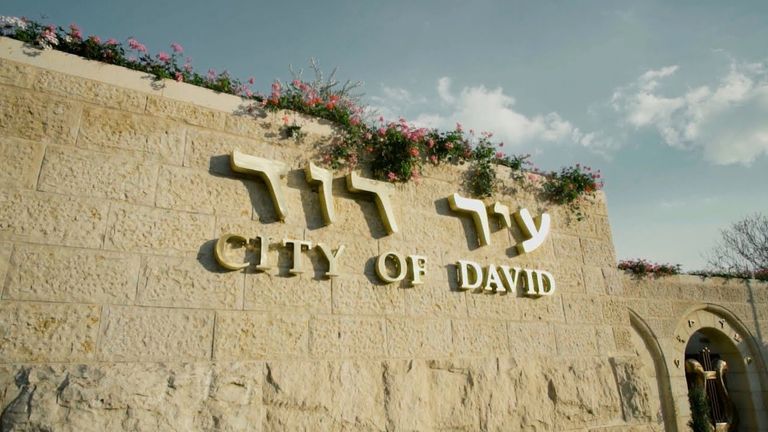
Its Long And Rich History
The Story Of King David
The truth is that there is not much in the way of evidence of his existence. However, there are sources corroborating it as well. He is mentioned in the Bible and has appeared on several stone tablets. The basis for the history of the King of the Israelites mostly relies on those two sources.
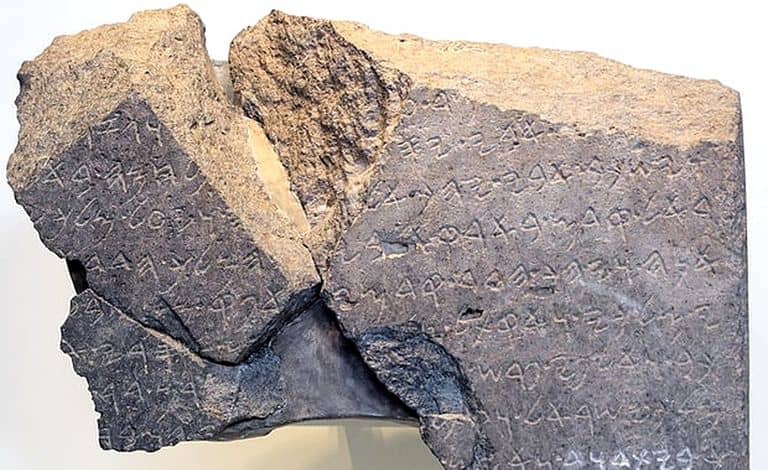
The Story Of King David
Up Against Goliath
In reality, David was not always such a powerful figure. In fact, he only went on to lead the military after he won over Goliath with a slingshot. It was only then that he earned the title of King David. Once he claimed victory over Jerusalem, it became the capital of the Israelite.
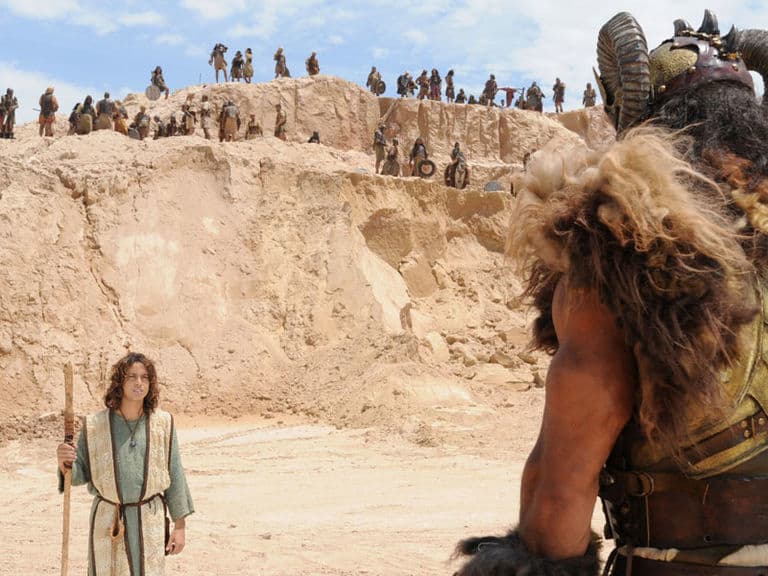
Up Against Goliath
The City Of David
As you might already know, Jerusalem went on to be known as the City of David. He ruled as the King of the Israelites for four decades. This was when locations in Jerusalem and Silwan earned much of their historical significance. It goes without saying that they are awesome to explore if you are a history buff.
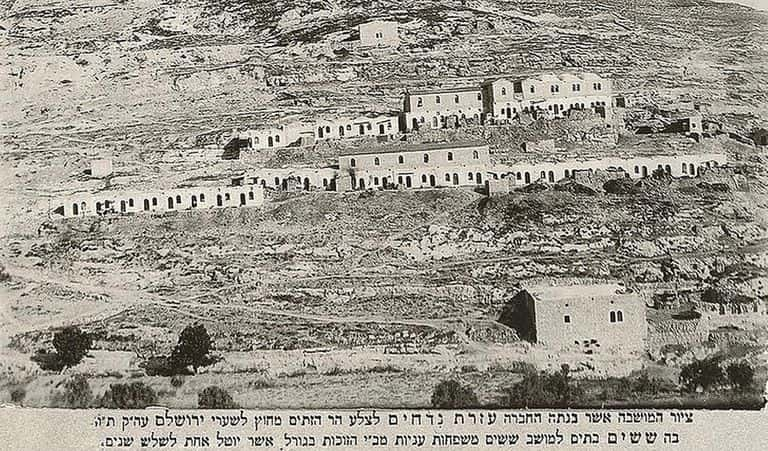
The City Of David
A Treasure Trove For Archaeologists
Jerusalem and Silwan are both treasure troves for archaeologists. The place is brimming with things to discover. Many of them date back to millennia in the past. There is only one problem here. Of course, these cities have been torn up and built up from the ground again and again through the years.
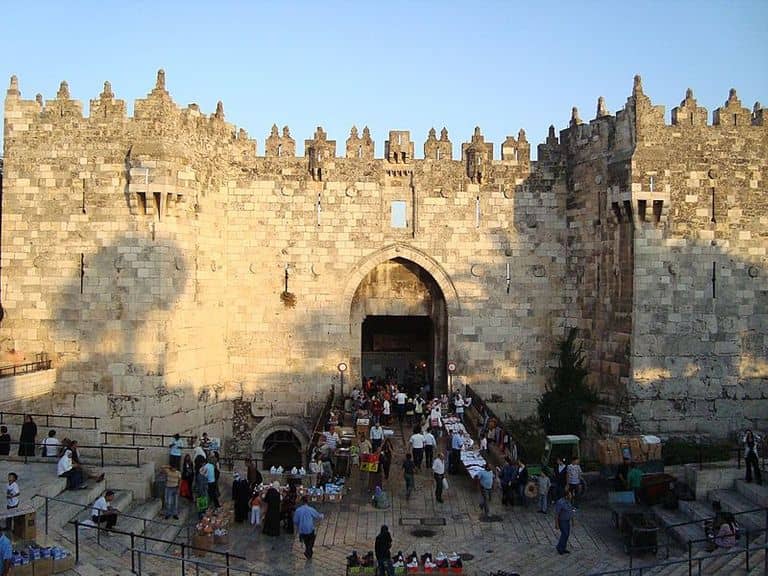
A Treasure Trove For Archaeologists
During The Takeover
As a matter of fact, a lot of things changed when the Romans seized Jerusalem in 64 B.C. They then went on to construct a new city and buried the sacred sites that the Israelites erected back in the day. The monumental places were once deemed long gone. However, the tide turned in 2004.

During The Takeover
Not Just A Burst Pipe
If it has not dawned on you yet, that was the year that the workers went down to fix a burst pipe. They did not expect what they found down there. Once the team found what was down there, they knew that it was time to leave it alone and leave it at the hands of the experts.

Not Just A Burst Pipe
The Carvings On The Wall
The workers found something that dates back to the time that Jerusalem was occupied by the Romans. Aside from the pipe, the team discovered odd carvings on the stone that surrounded it. They could tell that the carvings were not made by nature. No, they looked like something made by man instead.

The Carvings On The Wall
They Went Down There
A closer look at these carvings revealed that they were actually steps! When archaeologists revealed that it was actually an ancient staircase, the workers could not hide the surprise that they felt. They might have a lot of questions in mind, but the most pressing one had to do with its destination.
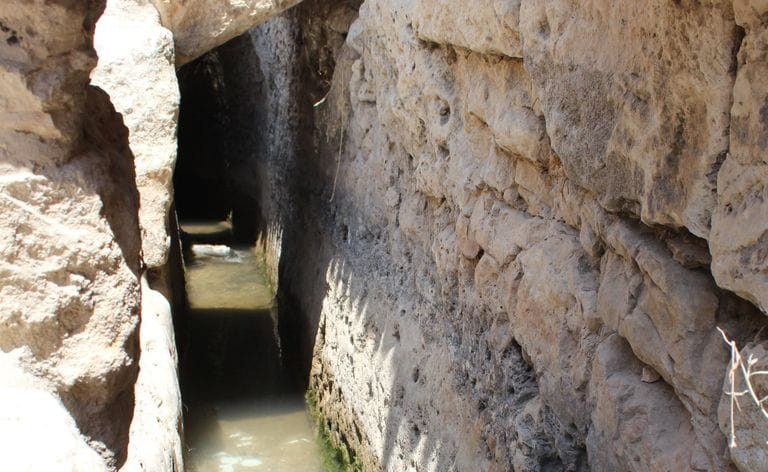
They Went Down There
Aside From The Stairs
The staircase was not the only thing that the archaeologists and workers found in Silwan either. Once they realized the gravity of the situation, they learned that the steps led to an important religious site. In fact, it might be the most significant one in Silwan. For the longest time, it was buried underneath the dirt.
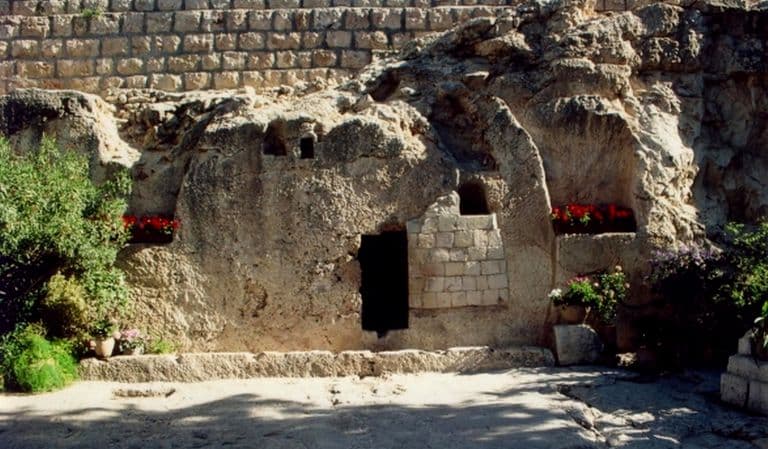
Aside From The Stairs
The Second Temple
There used to be two temples down there. The first one had been erected by the son of King David. The First Temple saw destruction in 586 B.C. However, the Second Temple remained there until A.D. 70. That was the time that both Jerusalem and Silwan were seized by a specific enemy.

The Second Temple
More Relics Lying In Wait
Yes, we are talking about the Romans. In 2004, the workers accidentally stumbled upon the Second Temple. It was the one that was lying close to the staircase. The staircase was not the only thing that was lying in wait down there. But what other relics did they find on the site?
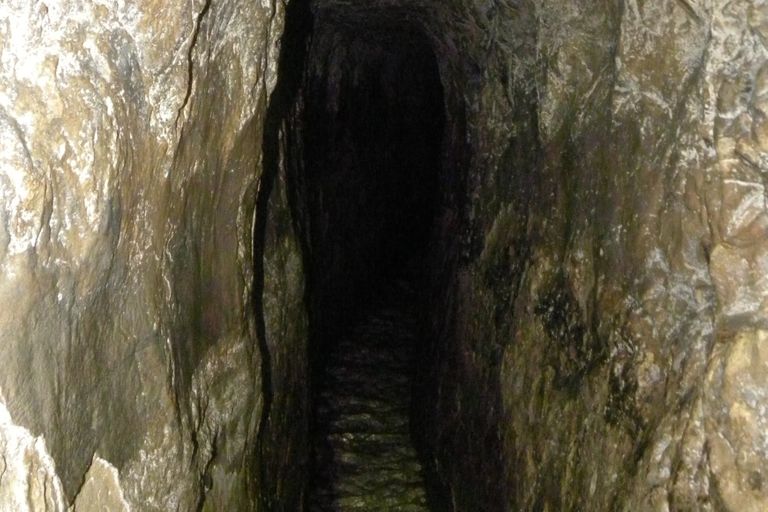
More Relics Lying In Wait
For The Longest Time
The staircase in question led to the Pool of Siloam. It is the sacred pool that Jews used to wash before going on to the Temple Mount. Can you believe that it had been lying down there for nearly two millennia? More than that, it also allowed experts to discover ever more important finds.
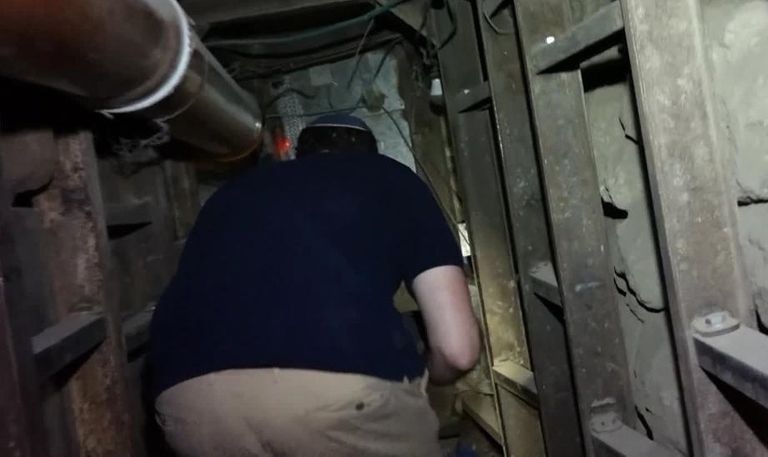
For The Longest Time
An Ancient Roadway
Since the 2004 excavation, archaeologists and experts have unearthed so much more than the pool and staircase close to the Second Temple. Aside from that, they dug up an ancient roadway leading from the pool to the Second Temple. We are sure that they were all delighted by this slew of discoveries.
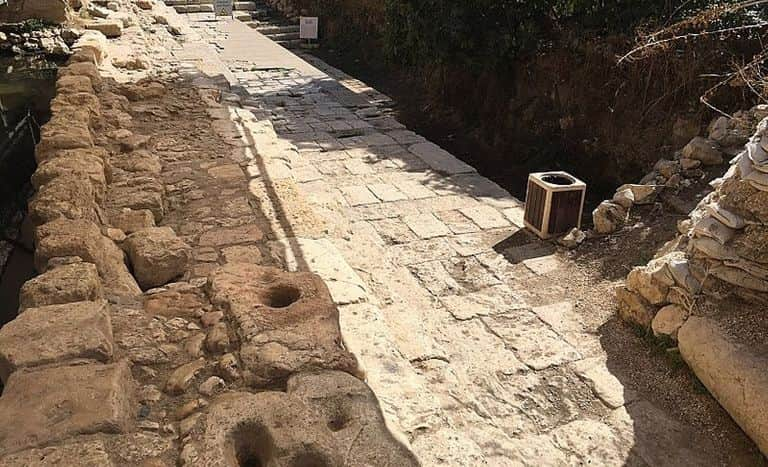
An Ancient Roadway
One Surprise After Another
Aside from that, the excavation of the roadway resulted in a shocking discovery. Isn’t it neat that they found out the identity of the builder as well? Obviously, someone built this roadway. Even so, the team of archaeologists and historians was taken by surprise when they found out the identity of this man.
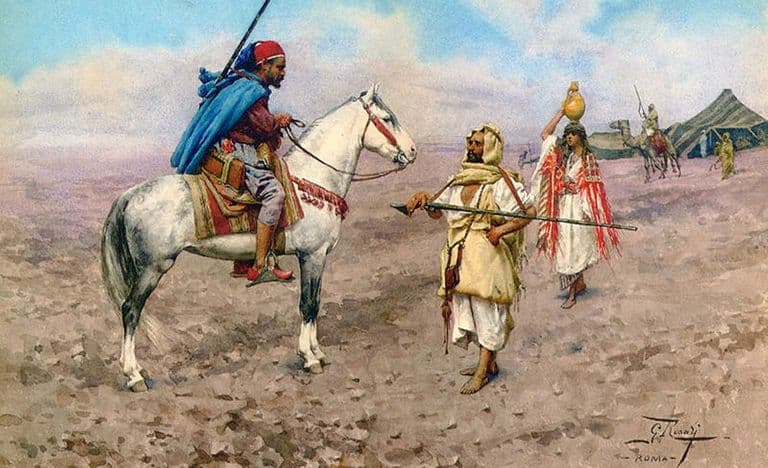
One Surprise After Another
The Coins They Found
They learned the identity of the builder together with a different discovery. Just so you know, there were around a hundred ancient coins embedded in this roadway. The dates on the coins gave them more information than they expected to find. It was how they learnt who built the road in question.
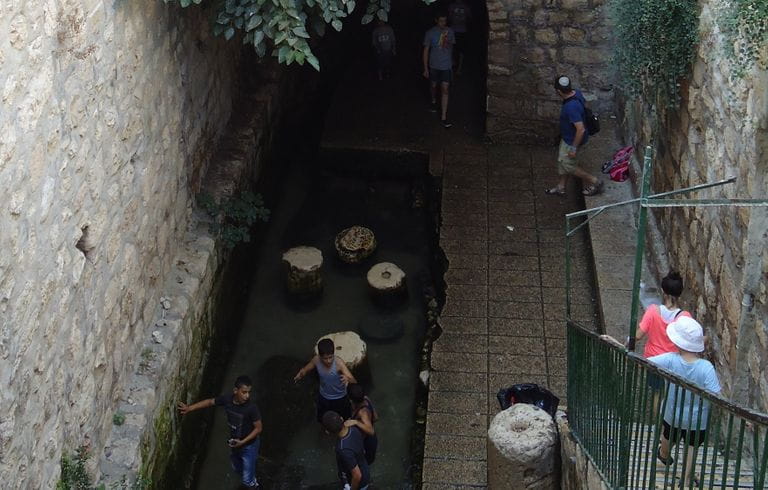
The Coins They Found
The Israel Antiquities Authority
Based on the dates on the coin, the road was constructed during the rule of Pontius Pilate. The New Testament claims that this was the very same man that sent Jesus Christ to his death. Hold your horses before you raise an eyebrow. The Israel Antiquities Authority’s Donald Ariel explained the rationale.
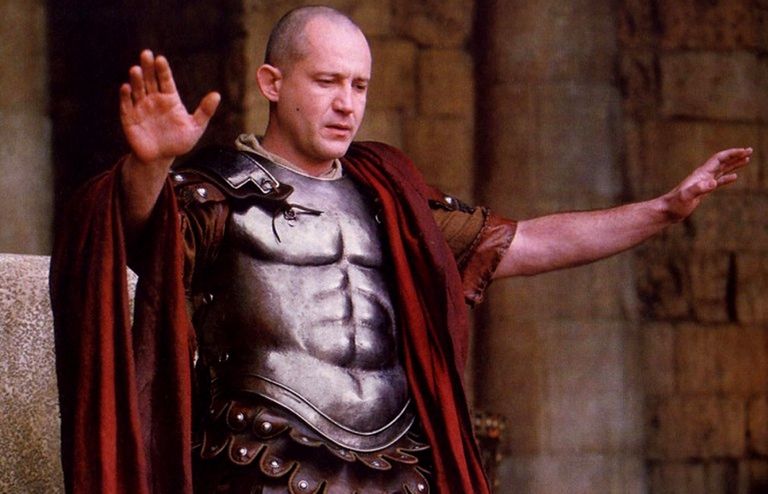
The Israel Antiquities Authority
The Time Of Pilate
The coins hail from A.D. 31. However, most of the excavated coins on the site date back to A.D. 40 or later. That is the reason that they surmised the road was constructed prior to that. Ariel explained that it was built prior to A.D. 40 or “in other words, only in the time of Pilate.”
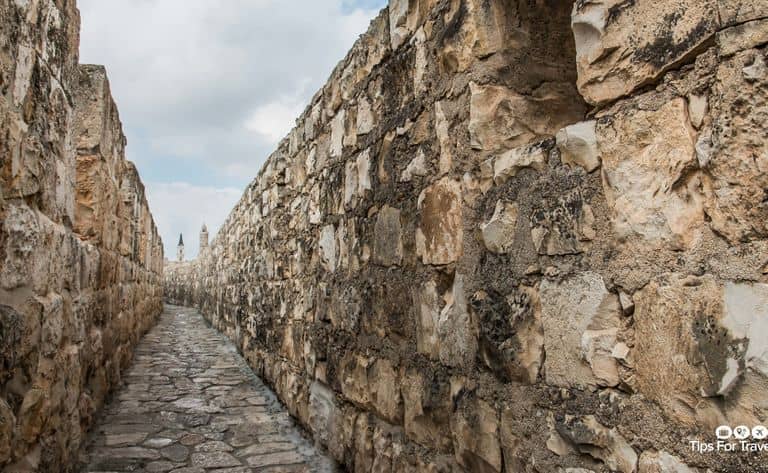
The Time Of Pilate
A Pilgrimage Road
It was a huge find that was matched only by the discovery of the staircase. The route of the ancient route has since been dubbed Pilgrimage Road. After excavating the site, they saw that it led to yet another staircase. What could they have possibly learned from this new find? Let us find out!
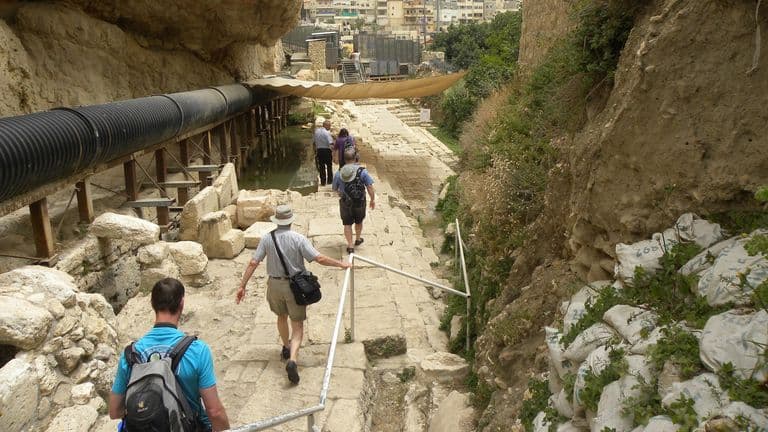
A Pilgrimage Road
In The Future
The staircase leading up to the Second Temple was definitely an amazing find. Archaeologists were aware that many other artifacts were buried and continue to lie in wait in the City of David. We can’t wait to see what they find next. In other parts of the world, people are making similar historical finds…
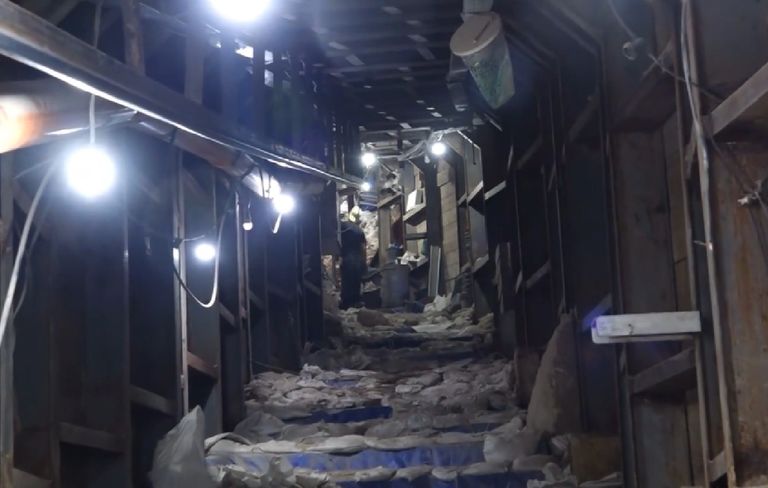
In The Future
Farmers Wanted To Access Water
This next amazing discovery started one cool day in March in the mountains close to Xi’an, Shaanxi Province in China. In the hopes of tapping into the water reserves of the area, a team of farmers started to dig a tiny well around a mile east of Mount Li. They had no idea what they were in for!
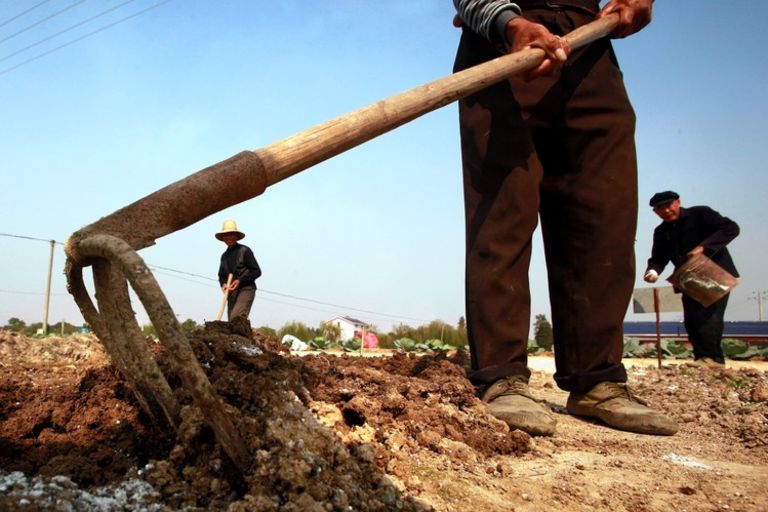
Farmers Wanted To Access Water
They Started To Dig
As the team worked some more, they gained hope as they got deeper and deeper. With each shovel of dirt, they grew even more hopeful. For the longest time, the mountains had proven to be the ideal place for treasure hunters. They did not have any clue what they were going to find there…

They Started To Dig
Pieces Of Terracotta
They were not surprised to find roofing tiles, bits of masonry, and terracotta fragments in the region. These things are common enough in the area. However, the tiny pieces did not give way to a bigger find in the past. In fact, it was generally thought to be nothing more than an ancient garbage dump.
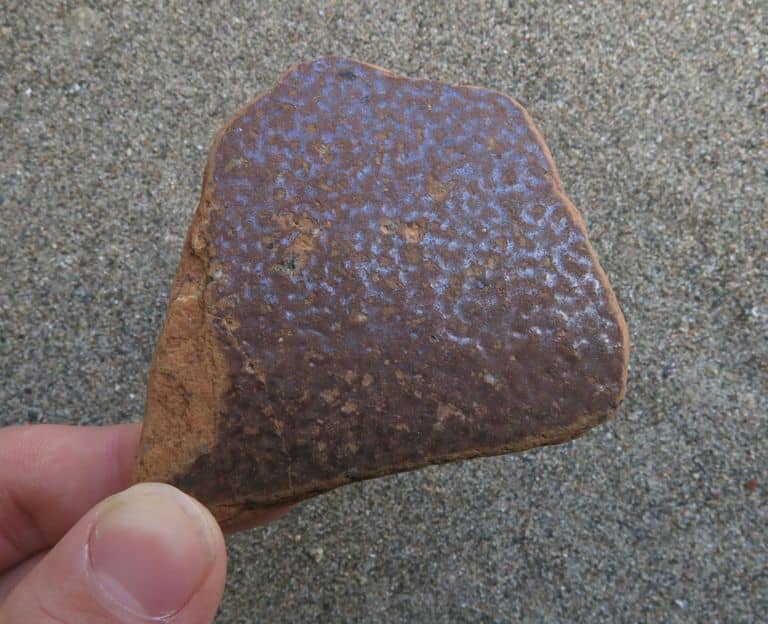
Pieces Of Terracotta
A Buried Man
A couple of hours into the digging process, a farmer stumbled upon a remarkable find. To his great surprise, he found what looked like a man! However, the catch was that this was not a person in the sense that it was not flesh and bone. No, this man was made entirely of terracotta.

A Buried Man
They Called In The Experts
Soon after that, archaeologists arrived at the scene to investigate the region some more. The team of experts cleared the earth around it to free the figure from the soil. This was not the last discovery on the site by far. They were stunned when they found one more terracotta soldier with the first one.
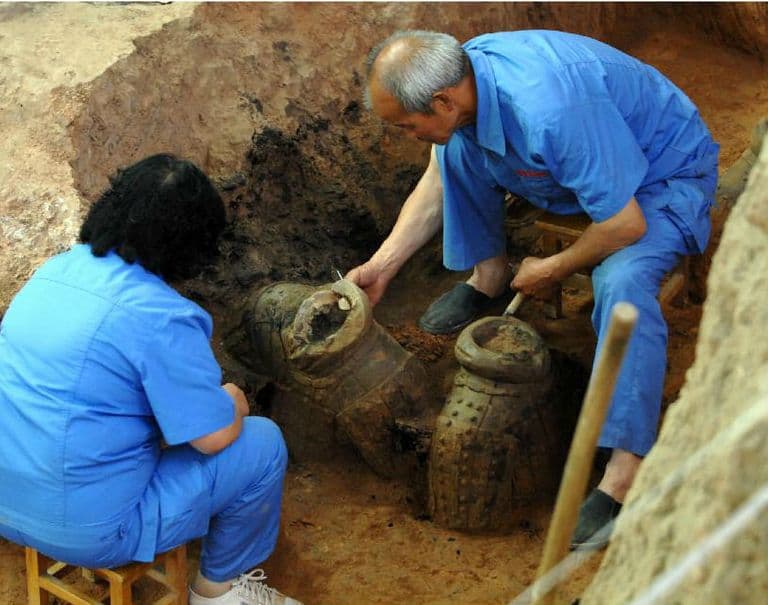
They Called In The Experts
More To This Than That
They could tell that there was more to this than meets the eye. This could not have been a set of misplaced garden pieces. The team of experts ended up using ground-penetrating radar to check what else was lying underneath the ground. They were nothing short of shocked by what they found.
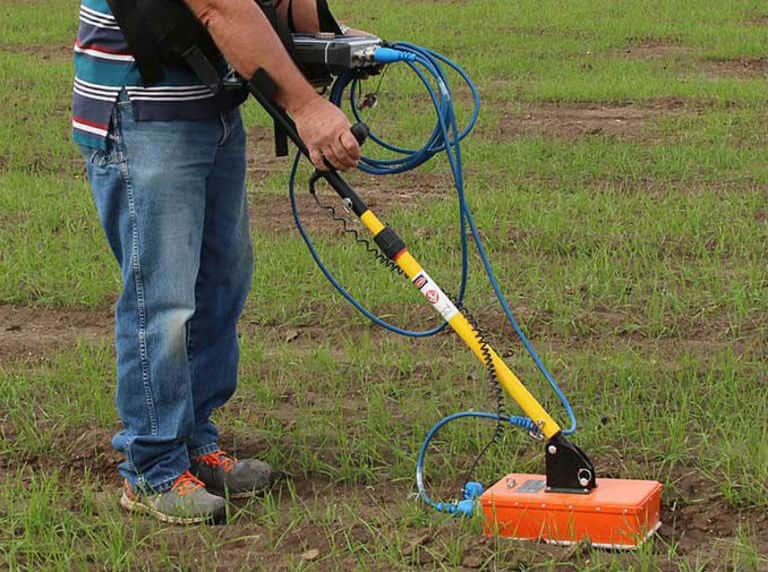
More To This Than That
What The Scan Showed
We doubt that anyone expected to find over 8,000 figures through the scans. The figurines were all packed in tight formations and surrounded an underground crypt. It was no use to guess what might be down there. The only way to find out for sure was to go down there and dig!
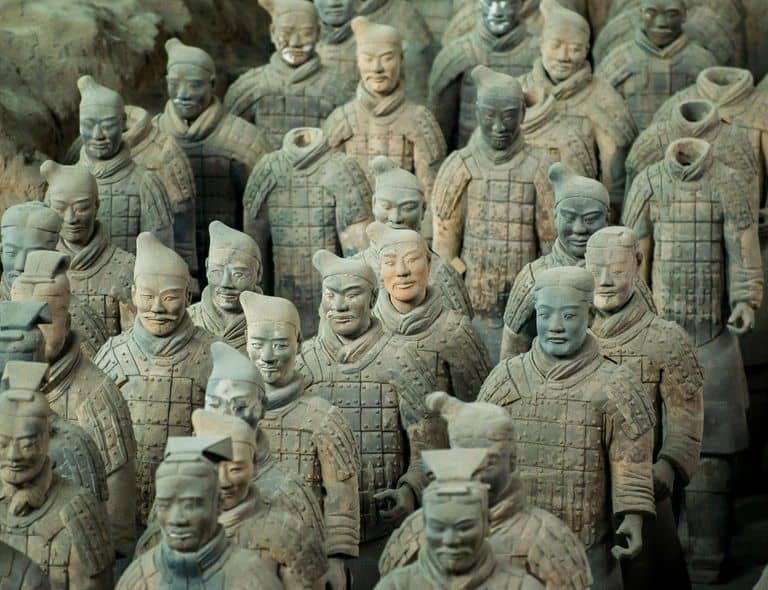
What The Scan Showed
The Excavation Results
This led to a massive operation. Hundreds of workers were sent to the area so that they could unearth the army of terracotta soldiers. After working on the soil, they found the terracotta men down there. For the first time in hundreds of years, these statues could be freed from the dirt at long last.
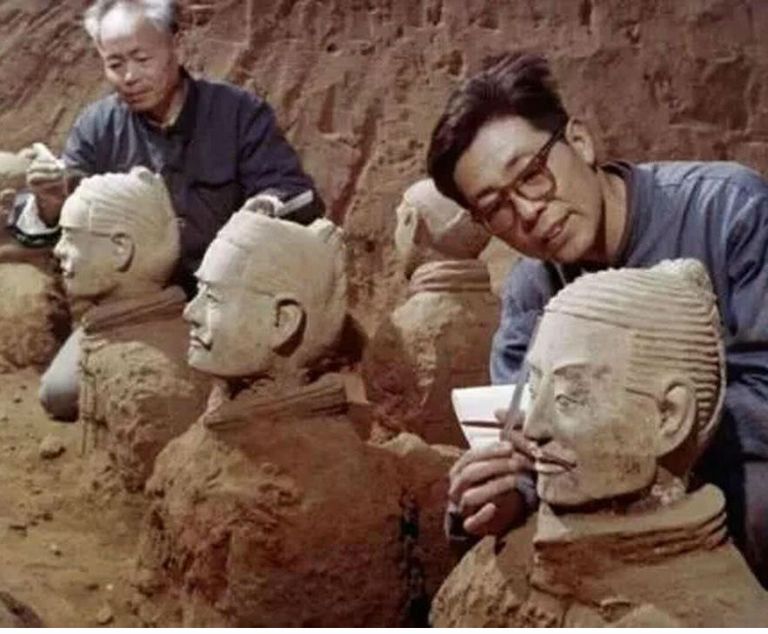
The Excavation Results
Not Just Soldiers
Mind you, the statues were not limited to soldiers. In fact, there were non-human figurines too. Among others, the experts found hundreds of terracotta animals in there as well. For one, they found birds and horses in the ground. There were over 500 working horses that pulled nearly 150 full-size chariots.

Not Just Soldiers
There Were Also Laypeople
When it comes to the human statues, they were not just soldiers. There were also civilians such as acrobats, musicians, and strongmen among the cache. This was nothing like they had ever seen in the past. Everyone could not help but wonder what on earth the terracotta army was doing down there.
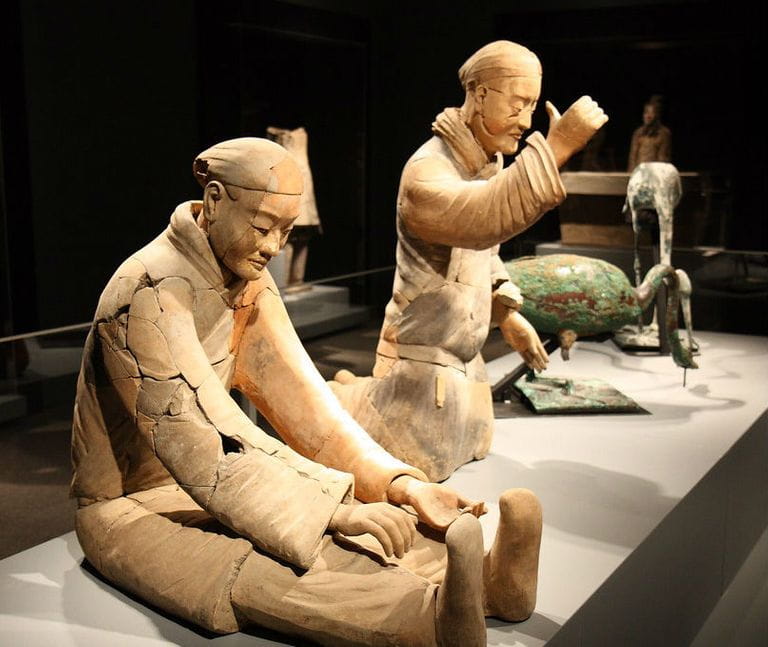
There Were Also Laypeople
The Records Of The Grand Historian
Scholars turned to a historian by the name of Sima Qian for answers. The key to the mystery lies in “Shiji” or “The Records of the Grand Historian.” This ancient text was penned in 94 BCE. Among other things, it came with tales of Qin Shi Huang, who went on to become the first Chinese emperor.
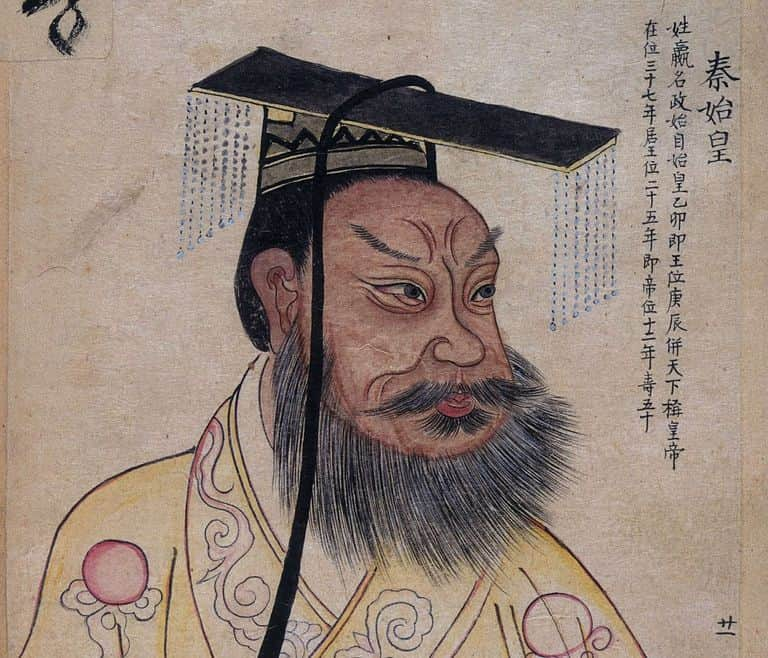
The Records Of The Grand Historian
When He Took Over The Throne
At the tender age of 13, Qin Shi Huang ascended the throne. He then worked on a huge mausoleum that would serve as his final resting place and a testament to his own power. As always, not everyone had been a big fan of this new ruler. Even back then, there was no getting around political conflict.
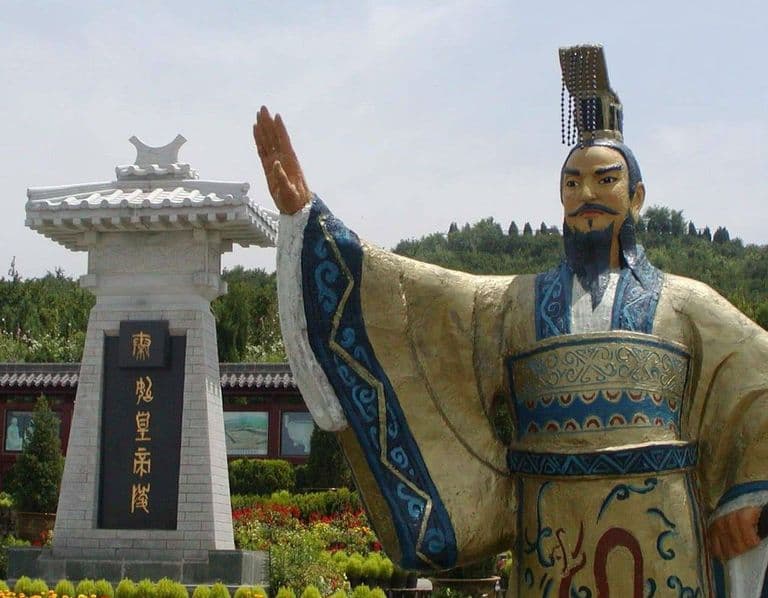
When He Took Over The Throne
The Warring States
Qin Shi Huang might get credit for the unison of the warring states, but it was not a peaceful process. In fact, it involved conquest and bloodshed. You would think that he would be able to rest easy after the death of his enemies, but he feared that they would come back to exact revenge on him in the next life.
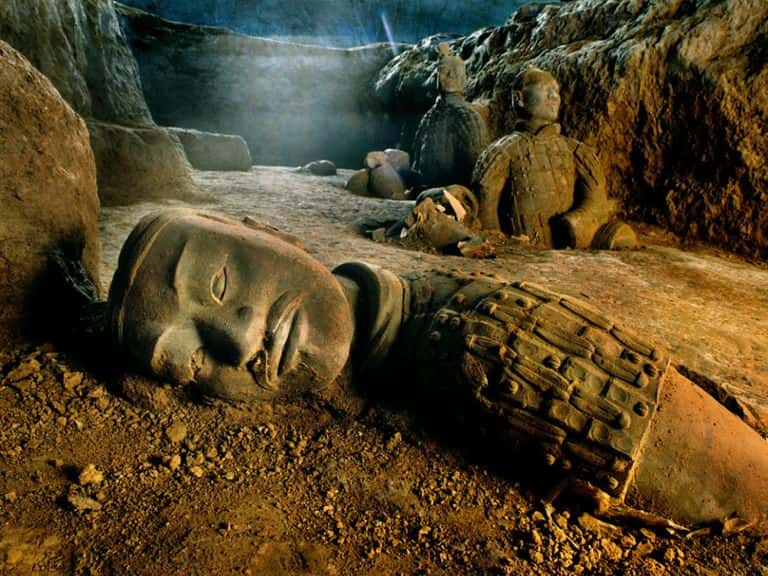
The Warring States
His Grand Mausoleum
This is the reason he came up with the idea of his mausoleum. Qin Shi Huang had local craftsmen build him an entire army of terracotta soldiers to keep his tomb safe. In 210 BCE, the emperor was interred. He was not alone. After all, they also buried his army of more than 8,000 statues to stand guard!
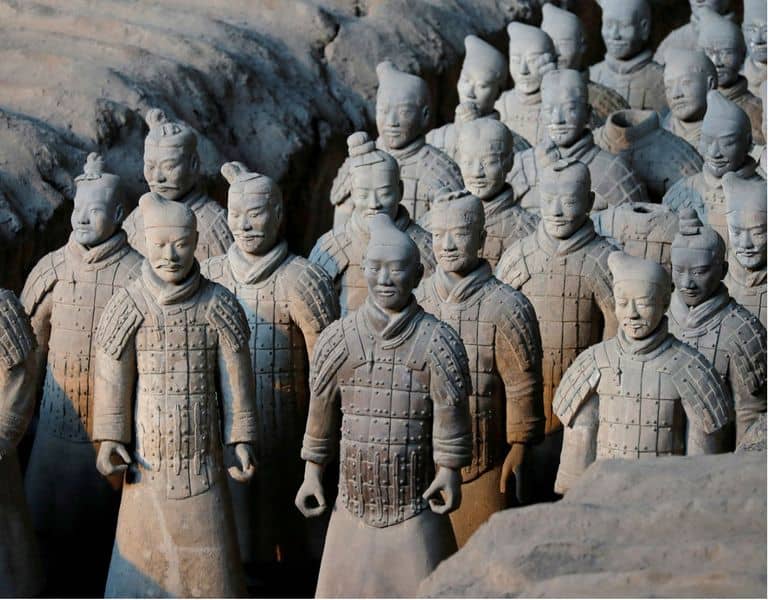
His Grand Mausoleum
The Buried Soldiers
Of course, the soldiers were not going to be of much help when it comes to keeping him safe. Nonetheless, the experts were eager to see what kind of treasures were buried with Qin Shi Huang. They knew how big of a find this was. However, they ended up running into a problem that had grave consequences for them.

The Buried Soldiers
His Mighty Tomb
The archaeologists got closer and closer to the tomb, but they found out something alarming. They started to pick up high radiation levels! They wondered if the builders of the tomb left behind something else to keep the resting place safe and sound. You are going to be surprised once you learn the truth!

His Mighty Tomb
During His Lifetime
When Qin Shi Huang was alive, he developed an obsession with the idea of eternal life. He wanted to find how to obtain such a thing. The emperor dispatched armies to look for an everlasting elixir such as this one. Aside from that, the ruler also developed a fondness for a particular liquid.
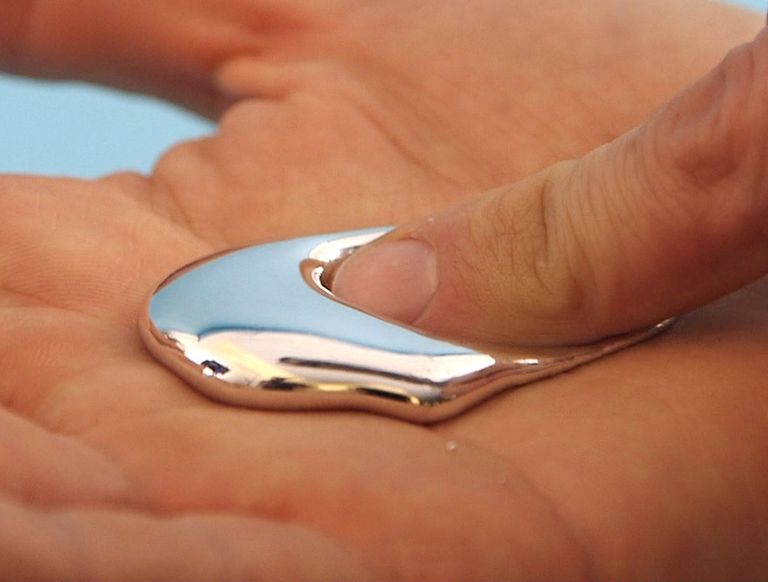
During His Lifetime
He Consumed Mercury
We are talking about none other than liquid! Qin Shi Huang was of the belief that this radioactive element was going to help him retain his youth. This is why he was always around it and even ingested the liquid. Upon the completion of his mausoleum, there were rivers of it flowing through the space.

He Consumed Mercury
His Early Demise
There is no doubt in our mind that his propensity for mercury had something to do with his premature death at only 49 years old. On top of that, it made his resting place very radioactive. As a matter of fact, the tomb is still sealed and off-limits to everyone to this day.
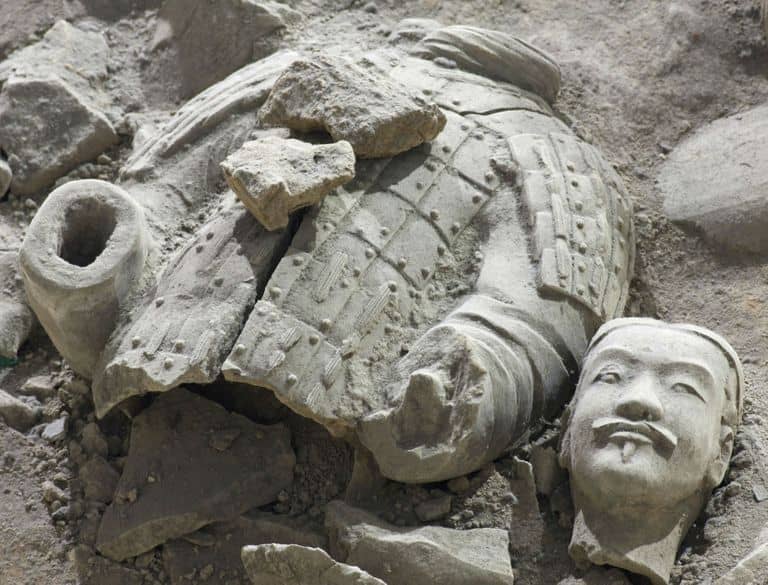
His Early Demise
It Is Now Open To The Public
Nearly five decades since the excavation, the mausoleum is open to the general public. Every year, the site receives thousands of tourists. Even though the story of the terracotta warriors has since become popular, the origin of other ancient artifacts has been disputed. This is the case for the Dead Sea Scrolls.

It Is Now Open To The Public
The Dead Sea Scrolls
The Dead Sea Scrolls are ancient Jewish texts that have been the source of fascination for scholars for the longest time. To this day, no one knows its true origins. Even though no one is really sure about the specific details, there are certain things that historians and other experts all agree on.
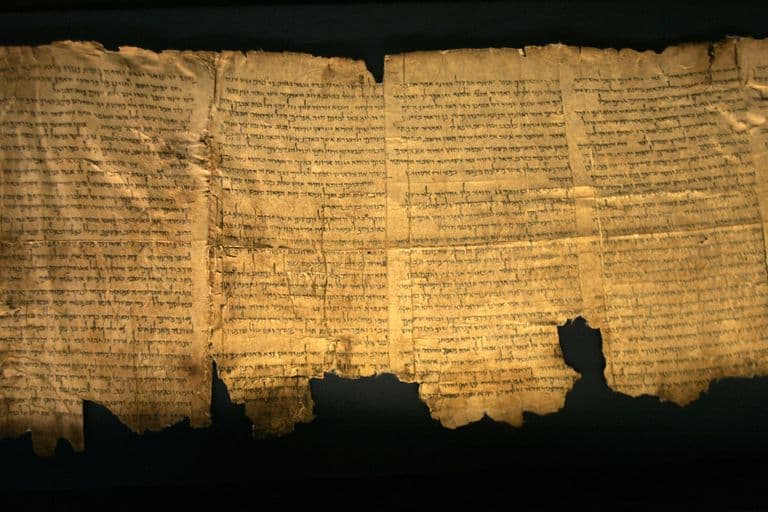
The Dead Sea Scrolls
The Qumran Caves
Where did they come from? Well, the scrolls were initially discovered in an alcove in the Qumran Caves of the Judaean Desert in the ‘40s. It underwent a chemical analysis, which allowed scientists to determine that the parchment and papyrus scrolls were made any time from 150 B.C. to 70 A.D.

The Qumran Caves
They Were Stunned
Experts were shocked when they uncovered the pieces of parchment. The Dead Sea Scrolls are among the oldest biblical documents that anyone has ever found. On top of that, they were in great shape for their age. The discovery has brought people from different parts of the world to the Qumran caves.
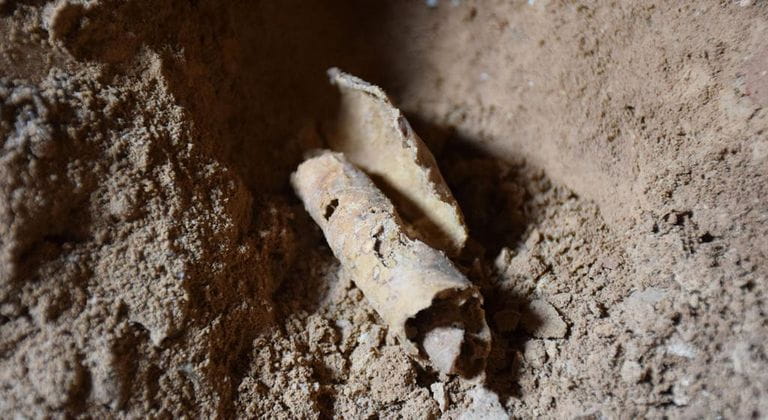
They Were Stunned
Their Historical Value
To be specific, people go to the Qumran caves to check out the place that housed one of the most historically valuable texts in history. It allows these visitors to inspect the area with their own two eyes. Many people, it goes without saying, want to know who wrote these things in the first place.
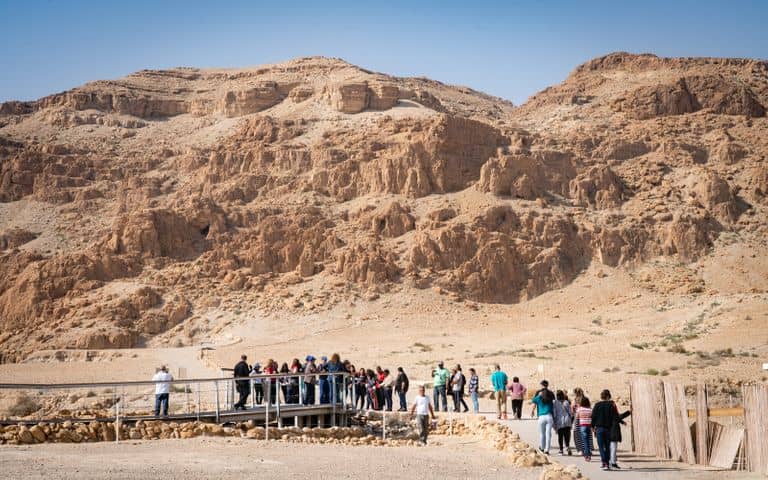
Their Historical Value
By The Essenes
Many scholars are under the impression that the ancient documents were written by the Essenes, which is a small Jewish sect that lived in the region close to the Qumran Caves. However, there is one man who is not sold on this idea even though it is prevalent. His theory might have a big impact on the mystery.

By The Essenes
Not Just One Group
Writing the Dead Sea Scrolls, a program by National Geographic, explores his idea. Was it really just one sect that wrote these important documents? In it, an archaeologist by the name of Robert Cargill shared, “Jews wrote the Scrolls, but it may not have been just one specific group. It could have been groups of different Jews.”
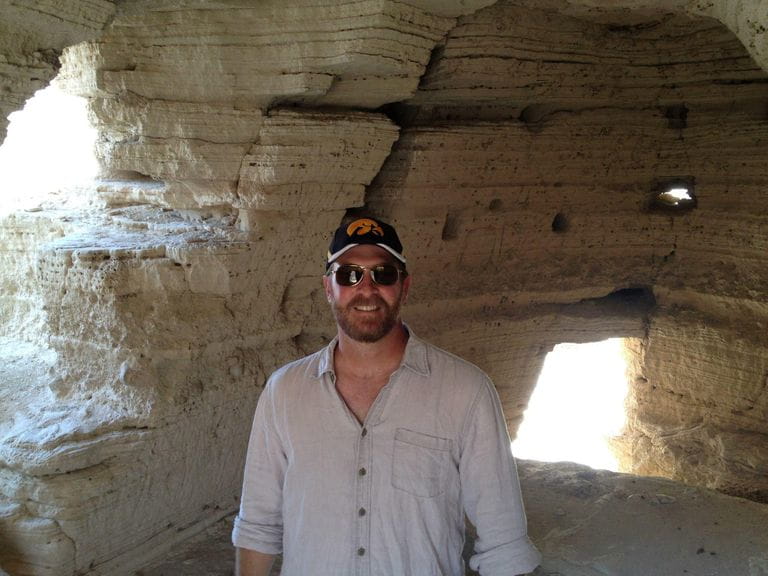
Not Just One Group
After The Siege
Based on his recent research, Cargill has come to the conclusion that a different team of authors helped write the Dead Sea Scrolls. His theory is that they fled after the Roman besieged the Temple of Jerusalem. After fleeing the burning structure, they must have added more information to the documents. There are people who do not buy it, however.

After The Siege
